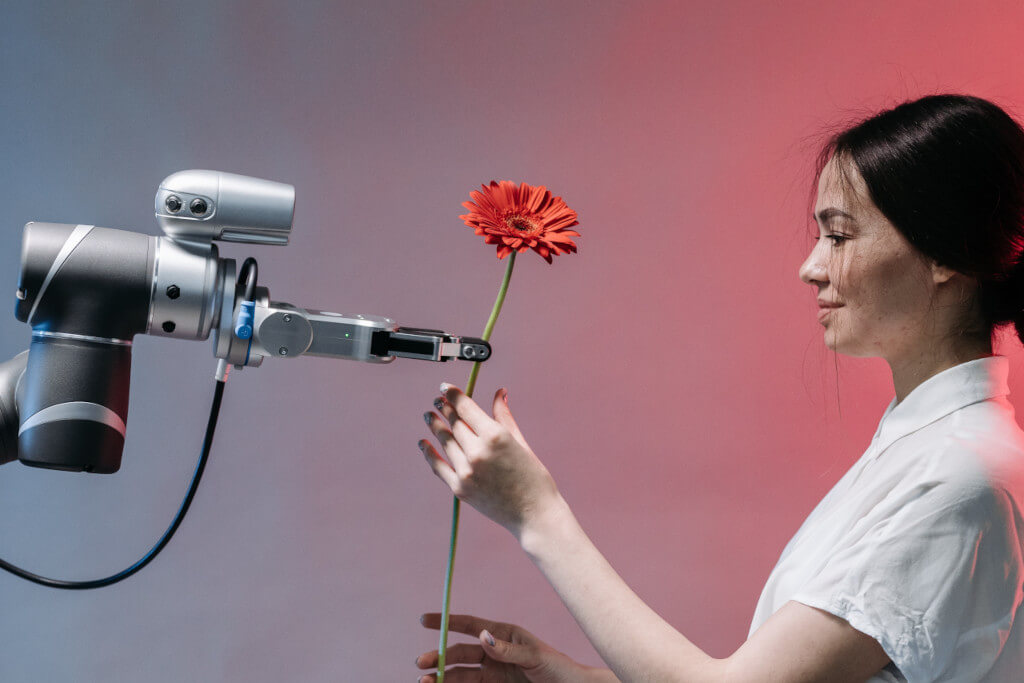We are getting in love with ChatGPT (aka Generative AI). Generative Artificial Intelligence is with us for decades but it took the entire world by storm (and to some extent by surprise) with the release of Open AI’s ChatGPT in 2022. The conversational interface made it easy for the wide public to interact with the AI tool and created the premises for global success. The use cases are many and the adoption is amazingly fast. But there is a big question related to AI-generated content: who owns it?
ChatGPT has become a popular tool in the marketing and advertising industry, as it leverages advanced machine learning models to create new content. By being trained on extremely large datasets, this AI model can generate creative and effective marketing materials, including slogans, ad designs, and even tailored strategies. This technology looks like having the potential to revolutionize the marketing landscape, making everything more efficient and effective. Virtually everyone in the industry jumped on the bandwagon of generative AI applications and is looking for ways to capitalize on the trend.
While the benefits are obvious, AI-generated content also comes with some issues. One of the most important is regarding copyright ownership and responsibility. Due to the rapid adoption of generative AI tools in marketing and advertising, it becomes crucial to explore and address the legal and ethical implications of these technologies. The copyright issue surrounding generative AI is not an easy nut to crack but I think help can come from a seemingly unrelated domain: the responsibility for autonomous cars’ behavior. While the two issues are distinct, there are valuable insights from the autonomous cars’ ongoing debate that I think can help navigate the grey areas introduced by generative AI.
The role of human creators vs. generative AI in copyright ownership
Traditional copyright law revolves around the idea that human creators are the primary source of original works. However, the emergence of generative AI has complicated this notion as machines can now create original (hopefully) new content without direct human involvement. This raises the question of whether AI-generated works are eligible for copyright protection and, if so, who should be granted the ownership rights.
Current legal frameworks are not adequately addressing these issues, as they were designed with human creators in mind. There are ongoing efforts to address the problem (for example in March 2023, the US Copyright Office expanded its guidance around the protection of art created with AI aid) but the process will be a long one. The uncertain legal landscape leaves creators, businesses, and AI developers facing potential risks and challenges in navigating copyright issues.
The autonomous car parallel with generative AI
Autonomous cars have been a topic of interest and research for decades. However, it was not until the 21st century that major advancements in technology, such as sensor systems, computer vision, and machine learning, enabled the development of practical self-driving vehicles. Here is why this parallel is interesting for our issue with ai generated content. There is also one key question to answer about autonomous cars: who is at fault in case of an accident? The car owner, the car manufacturer, or the software developer? While the context here is negative, the background is the same: who is responsible (owns) for the output of the AI model?
Assigning responsibility in autonomous car accidents is a complex issue that raises legal and ethical questions. For instance, how should liability be divided among the parties involved? What role does the human driver play in supervising the AI system? To what extent can an AI system be held accountable for its actions? The legal and ethical challenges faced by the autonomous car industry offer valuable insights into the generative AI copyright debate in marketing and advertising. Both fields involve advanced technologies that blur the lines between human and machine decision-making, complicating the traditional concepts of responsibility and ownership.
Both sectors face the challenge of developing legal frameworks that can adapt to rapidly evolving technologies while balancing the need for innovation, public safety, and the protection of intellectual property rights. As AI systems become more advanced and independent, they challenge our understanding of creativity, intentionality, and responsibility, challenging us to reevaluate existing legal and ethical frameworks.
Outdated legal frameworks and ethical concerns
Different jurisdictions are currently working on regulations to address the responsibility issues related to autonomous cars. Some propose the creation of a separate legal category for autonomous vehicles. Others advocate for new insurance models to accommodate the unique risks and challenges posed by self-driving cars. As both autonomous cars and generative AI fields continue to advance rapidly, there is a pressing need to update and adapt legal systems. The debate is ongoing, with stakeholders from various sectors weighing in on the best approach to ensure public safety and foster innovation.
The use of generative AI and autonomous cars also has significant societal implications, raising ethical questions that extend beyond legal responsibility and ownership. For instance, how do we ensure that AI-generated content aligns with societal values and standards? How can we prevent AI systems from perpetuating biases or creating misleading information?
How do we address concerns about job displacement, data privacy, and the potential for AI-controlled systems to be used for nefarious purposes? By examining these ethical dimensions, we can better understand the broader implications of integrating AI technologies into our daily lives and develop strategies to address potential risks and challenges.
Potential solutions for generative AI’s copyright issue
One approach to addressing the generative AI’s copyright issues for marketing and advertising (but not limited to) could involve dividing ownership rights between AI developers and human creators. This would acknowledge the contributions of both parties and ensure that each has a stake in the AI-generated content’s legal protection and potential revenue.
Another solution could involve creating a separate copyright category specifically for AI-generated content. This new category could establish distinct legal protections, limitations, and licensing requirements tailored to the unique characteristics of AI-generated works.
A third option would be a licensing system to regulate the use of AI-generated content in marketing and advertising. This would allow AI developers, human creators, and businesses to negotiate and agree on terms of use, ensuring that each party is fairly compensated and that intellectual property rights are respected.
Stakeholders
While the role of governments, legal systems, and international organizations in shaping copyright laws for generative AI is obvious, they are not the only relevant players. To foster innovation while ensuring the protection of intellectual property rights, various stakeholders must work together, including:
- AI developers, who should create transparent and ethical AI systems that respect copyright laws and minimize potential risks.
- Human creators, who can collaborate with AI systems to develop new and innovative marketing and advertising content that benefits from both human creativity and machine efficiency.
- Businesses and marketing professionals, who can adopt responsible practices when using AI-generated content, ensuring that intellectual property rights are respected and that ethical considerations are taken into account
Final thoughts
Without being an expert on the field of copyright laws, in this blog I explored the copyright issues surrounding generative AI in marketing and advertising, drawing parallels with another ongoing debate: the responsibility for autonomous cars. There are differences but also many similarities between these two domains. Especially regarding the challenges of assigning responsibility and ownership in a world where technology plays an increasingly significant role in decision-making.
As AI technologies continue to advance and reshape the marketing and advertising landscape, it is essential to address the associated copyright issues proactively. I think we (marketers) are both part of the problem and of the solution, and we need a solid understanding of the context. By working together for addressing these challenges, we can harness the full potential of generative AI while minimizing risks and fostering a more transparent and equitable industry.




